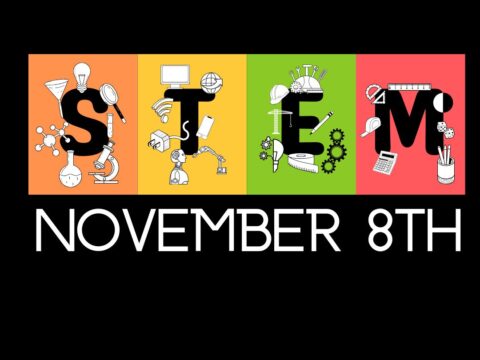Citizen scientists come from all walks of life and have made invaluable contributions to scientific knowledge and understanding. Consider:
- Charles Darwin: Darwin often relied on the observations of amateur naturalists and enthusiasts during his research
- Mary Anning: a fossil collector in the early 19th century
- William Herschel: an astronomer who discovered the planet Uranus
- E. O. Wilson: an influential biologist and conservationist who promoted citizen science initiatives such as the “School of Ants”
- Margaret and Geoffrey Leaney: husband-and-wife team who developed methods for rearing insects
Are you interested? Here’s what you should know:
Becoming a Citizen Scientist: What You Should Know
Human scientific endeavors have consistently expanded in scope and complexity over the last two centuries. From pondering over simple natural processes such as the transitions between day and night to complex genomic studies, science has come a long way.
Apart from careful studies conducted in complex laboratories, science also runs on data collection, observations, and statistical analysis. The extension of scope has led to larger experiments that need vast groups of individuals to be involved in the process. This is where citizen science comes in.
Scientists are often strapped for time, they are cognitively overloaded and stretched thin due to the already demanding nature of their professions. They often require extra sets of eyes to help them carry out a variety of scientific tasks such as data collection, data processing, collation, and even statistical studies.
Citizen science allows the common public to participate in important scientific studies, partnering with scientists and helping them with work crucial to the enhancement of human knowledge. It allows participants right from young children to retirees to participate in important scientific work. A classic example of teamwork, citizen science is a community effort that brings together both professionals and novices to help bring about change for the greater good.
Understanding Citizen Science
Citizen science or community science entails the collaboration between scientists and public volunteers in carrying out key tasks such as experiments, data collection, and answering real-world questions.
The general public and scientists combine their efforts to carry out large-scale activities so that the labor involved in the projects is distributed. Such projects are especially useful in population studies, wildlife conservation efforts, psychological surveys, and behavioral research.
Citizen scientists have also been involved in efforts to mainstream scientific awareness and education among the general masses. Fields such as genetics and astronomy have also benefited from the collaborative approach, and key developments came about due to the contributions of numerous interested individuals. Participants in citizen science programs are sometimes referred to as amateur or non-professional scientists.
For the most part, citizen science works to enhance the reach and capacity of the scientific framework. Apart from providing researchers with much-needed support, citizen science exposes interested non-professionals or students to the realities of scientific work. This provides aspiring scientists and amateur contributors with much-needed knowledge of the scientific method.
The History of Citizen Science
Science before the nineteenth and twentieth centuries was carried out by interested individuals whose curiosities in the natural world were self-funded. This included gentlemen scientists such as Darwin and Newton, who were involved in science more as a hobby or an activity as opposed to a formalized profession.
Toward the end of the nineteenth century, science and science education was formalized, following which institutionalized efforts in research and experimentation were more common. Examples of citizen science go back to the colonization of the Americas when British colonists often attempted to record the weather during their explorations.
A few experts even consider great historical figures such as Leonardo da Vinci to be among the first citizen scientists who popularized natural intrigue among the larger public.
The twentieth century was when radical changes to the structure and method of science took shape. Following the institutionalization of the sciences, research, and inquiry became a full-fledged profession. Also, the two World Wars necessitated rapid research and innovation. This led to the creation of a funding-based scientific approach that we witness today.
Grants and donations became common, providing both competition and incentive to innovate and answer fundamental questions in the scientific realm. However, these models, alongside the professional scientific community’s limitations became apparent. This led to the popularization of citizen science.
Interestingly, though, the first-ever citizen science program was conducted by famed ornithologist Wells Cooke and was put in place by 1881. He roped in birding enthusiasts to collect information about migratory patterns in birds. Its popularity grew dramatically, and Cooke’s efforts were formalized by the US government which established the North American Bird Phenology Program.
Why is Citizen Science Important?
Citizen science has numerous advantages not only for the scientific community, but also for students, and interested civilians that participate in these projects. While the involvement of a large number of individuals and its impact on productivity is an obvious outcome, community participation in scientific undertakings presents several unique opportunities for everyone involved.
- Practical Learning
Scientific research involves several ground realities and interdisciplinary aspects that students and the general public are not exposed to. Participation in community science undertakings allows these groups to become more acquainted with these nuanced features of scientific research.
- Popularizing Science
Citizen science projects have been instrumental in communicating the importance of scientific research to both students and community members. Projects such as Disk Detective from NASA have helped classify several objects of interest around young stars that might be forming planetary systems. Such projects raise public interest alongside carrying out key scientific discoveries.
- Contributions and Recognition
Citizen scientists’ contributions are actively recognized, and key discoveries are credited to these groups of individuals by including them in the list of contributors. This is of special interest to students envisioning a research career, as these contributions have a positive impact on their prospects.
- Critical Thinking and Scientific Literacy
Exposure to the scientific community and its methods enhances students’ and amateur volunteer scientists’ approaches toward specific problems. Apart from fostering empiricism, citizen science also instills grounding in prevalent research methods, practices, and the framing of evidence-based solutions to tangible problems.
Challenges in Citizen Science
Like all undertakings, citizen science, too, is not without its shortcomings and challenges. Addressing these roadblocks will be key to utilizing the true potential of citizen scientists and their capabilities in enhancing outcomes.
- Most participation in citizen science projects is voluntary, and participants have limited time. Striking a balance between other commitments and the project might be a challenge citizen scientists will have to address before getting involved.
- Managing protocol and data collection is a notable issue in this area, as many participants are unaware of scientific norms when indulging in these tasks. Training and providing instructions might be useful.
- Standardizing data from multiple sources is another problem. Not all participants provide the same extent or nature of data. Streamlining and validating these multiple sources can be time-consuming.
- Not all scientists are interested in getting the larger public involved. Reconciling their concerns with public participation will be key in mainstreaming citizen science projects.
- Ethical concerns and considerations are of special importance in citizen science. Participants might be involved with sensitive information or might work with other living beings. Establishing protocol, privacy, and informed consent will be of import.
How to Become a Citizen Scientist
Here’s a short five-step guide to becoming a citizen scientist:
- Outline your objectives and decide on what you intend on achieving by participating in a citizen science program.
- Pick your areas of interest, and shortlist at least three potential disciplines.
- Begin looking for upcoming or ongoing citizen science projects in the newspapers, magazines, or on relevant government and organizational websites. Pay close attention to the prerequisites such as time requirements, travel, equipment, training period, and prior experience.
- Evaluate your existing commitments against the requirements of the project. Shortlist programs that align with your interests and skills.
- Enroll for the program and await confirmation.
Citizen science brings together commitment, community, research, and cooperation. It provides numerous opportunities for students and the general populace alike, bringing them closer to useful scientific contributions. Lastly, apart from the knowledge gained, these projects also enhance community bonds and raise scientific temper in people.
Author bio
Sophia is an online ESL/EFL instructor and a passionate Science educator. She found her true calling — teaching — while she was juggling writing and a 9-5 desk job. Her active online presence demonstrates her strong belief in the power of networking. If you want to connect, you can find her on Facebook, Twitter, Medium, and her blog Essay Writing and More.
Here’s the sign-up link if the image above doesn’t work:
Jacqui Murray has been teaching K-18 technology for 30 years. She is the editor/author of over a hundred tech ed resources including a K-12 technology curriculum, K-8 keyboard curriculum, K-8 Digital Citizenship curriculum. She is an adjunct professor in tech ed, Master Teacher, webmaster for four blogs, an Amazon Vine Voice, CSTA presentation reviewer, freelance journalist on tech ed topics, contributor to NEA Today, and author of the tech thrillers, To Hunt a Sub and Twenty-four Days. You can find her resources at Structured Learning.







































This is a very interesting article. I have been thinking about becoming a citizen scientist. For example assisting NASA. You mentioned Disk Detective from NASA but also ExoPlanet Watch, Stardust@home, also testing local waters, or just allowing science organizations to remotely use your computer when you are not using it, such as the Climateprediction.net project, in which you allow the climate attribution team to run climate modeling on your computer. Believe or not, they lack computer power, and using thousands of laptops every night beats borrowing a supercomputer for a day.
There are so many wonderful citizen science projects available for children and adults to participate in. It can be very rewarding. I sometimes participate in a bird counting project.